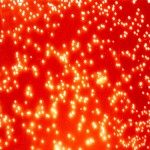Lien vers Pubmed [PMID] – 25751658
PLoS ONE 2015;10(3):e0116215
Chaperone/usher (CU) assembly pathway is used by a wide range of Enterobacteriaceae to assemble adhesive surface structures called pili or fimbriae that play a role in bacteria-host cell interactions. In silico analysis revealed that the genome of Klebsiella pneumoniae LM21 harbors eight chromosomal CU loci belonging to γκп and ϭ clusters. Of these, only two correspond to previously described operons, namely type 1 and type 3-encoding operons. Isogenic usher deletion mutants of K. pneumoniae LM21 were constructed for each locus and their role in adhesion to animal (Intestine 407) and plant (Arabidopsis thaliana) cells, biofilm formation and murine intestinal colonization was investigated. Type 3 pili usher deleted mutant was impaired in all assays, whereas type 1 pili usher deleted mutant only showed attenuation in adhesion to plant cells and in intestinal colonization. The LM21ΔkpjC mutant was impaired in its capacity to adhere to Arabidopsis cells and to colonize the murine intestine, either alone or in co-inoculation experiments. Deletion of LM21kpgC induced a significant decrease in biofilm formation, in adhesion to animal cells and in colonization of the mice intestine. The LM21∆kpaC and LM21∆kpeC mutants were only attenuated in biofilm formation and the adhesion abilities to Arabidopsis cells, respectively. No clear in vitro or in vivo effect was observed for LM21∆kpbC and LM21∆kpdC mutants. The multiplicity of CU loci in K. pneumoniae genome and their specific adhesion pattern probably reflect the ability of the bacteria to adhere to different substrates in its diverse ecological niches.


